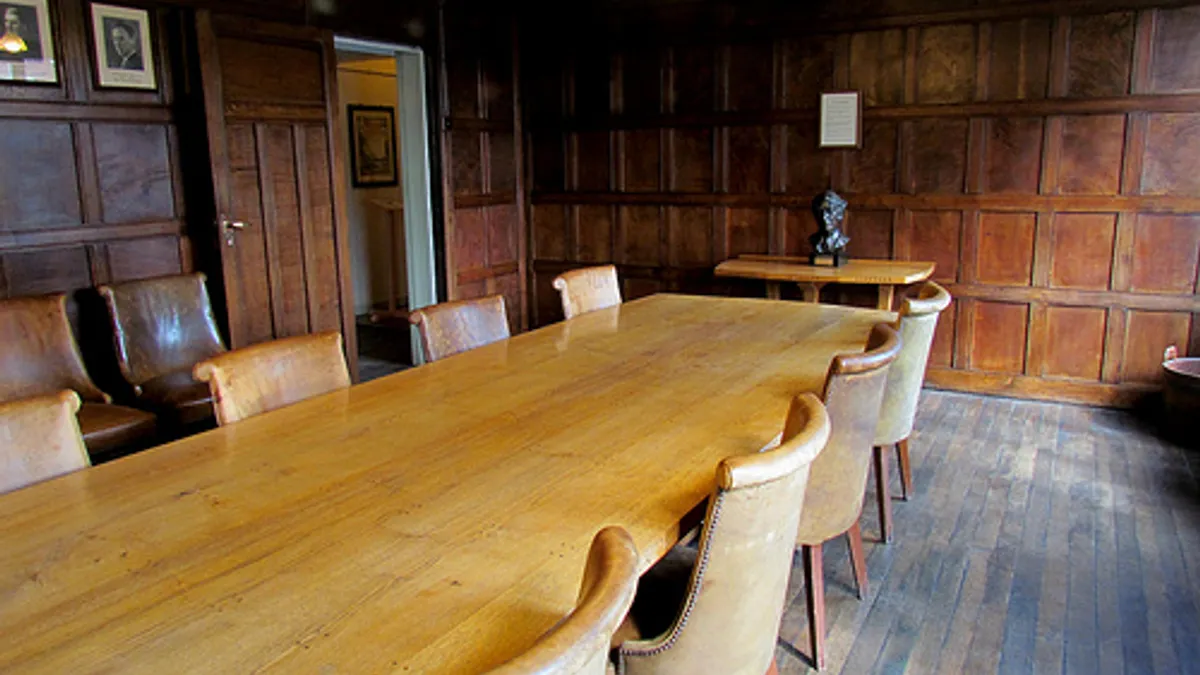Views differ about the causes and the pace of resignations by college presidents, but experts generally agree that many campuses will see a change in leadership over the next decade as a large crop of older execs decide to move out and a dwindling number of younger ones show they are prone to move around.
“There is a high percentage of baby boomers, and they will be retiring. I’m sure there will be highly qualified people to step in, but there will be a lot of change.” says Mary Pat Seurkamp, formerly the president of Notre Dame University in Baltimore and now a partner with MPK&D Higher Education Strategy and Leadership, a higher education consulting firm. “Also, these are wonderful positions, but they are increasingly very, very challenging.”
Some experts believe those challenges are the reason the pace of resignations has been high for the last decade, a pattern that is continuing. Beyond that, younger presidents now seem to be leaving at a faster rate, and the average age of college presidents has risen significantly.
“There have been growing pressures over a period of time, and a few years back there was a perceptible increase in the number of presidencies turning over,” says Richard Ekman, president of the Council of Independent Colleges, which represents about 700 small and mid-sized schools. “Now, I think the average age indicates we are building up to another large number of turnovers.” He also says he’s been surprised to see several young college presidents recently announce they are leaving positions where they had been successful, which some attribute to job dissatisfaction and some to a cultural trend that encourages shorter tenures in executive roles.
Data from a recent American College President (ACP) survey by The American Council on Education (ACE) and TIAA Institute shows the average age of presidents has risen over time to 61, almost 10 years older than the average in the mid 80s, while over that same period the number under 50 has dropped dramatically from 42% to just about 10%. The number of presidents over 70 doubled over the past five years, the ACP report says, to about 11%.
In addition, about 54% of the presidents reported in the most recent survey that they were going to leave their position within five years, and the survey found the average tenure has dropped about two years over the last decade to about six years.
The American Association of State Colleges and Universities also has reported 25% of its members schools have experienced a change in leadership recently, and a year ago among the 81 public Research 1 universities, about 56 reportedly had seen a president leave in the previous five years.
“These trends suggest a higher level of presidential turnover in the near future due to retirements and shorter tenures,” says Jonathan Gagliardi, associate director for the ACE Center for Policy Research and Strategy and one of the report’s authors. “This is important to consider, given that 54% of presidents expect to leave their current presidency in five years or less.”
While the ACP survey suggests the causes of frustration among these administrators have remained similar (tight budgets, lack of time, faculty resistance to change and an ability to maintain a work/life balance), the number reporting each of those complaints has ticked up over the past five years.
Ekman says among his members the number of people leaving office has risen because of the financial squeeze of the recession, diminished government and private resources, regulations imposed by the Obama administration and free college initiatives, which have more dramatically affected his members.
Additional stressors make it ‘hard to lead’
He and Seurkamp say that the aging of the baby boom presidents will continue to result in resignations, as will dissatisfaction.
“It is more challenging,” says Seurkamp. “There are many more claims on their time. You have to be available 24-7. Competition is tight and so is money. There are more demands of government, and Title IX institutions have more to worry about. I could go on for a long time about the environment that makes it more demanding for a college president.”
Ekman says these stressors grow sharper in an atmosphere where college presidents also have to defend their fundamental mission.
“I’m concerned about the effect of growing public skepticism about higher education and its value. The forces that favor that view make it very hard for those of us in higher education to tell success stories. That then makes it hard to lead.”
Frank Casagrande, a higher education consultant, says boards of directors often expect results quickly and are more likely to fire presidents if they don’t see progress or put additional pressure on administrators, which then causes them to move on.
“There is also an unrealistic expectation from all the stakeholders about the impact that a single individual can have,” he says. “Meanwhile there is often an unrealistically rosy picture painted during the recruitment of a new president.”
Others have suggested some chosen for these positions are not a good fit – boards are hiring more “managers and fewer leaders,” or an expectation that schools would be run like businesses in these more challenging times, though some in presidential positions, having risen through academia, don’t have those credentials.
















